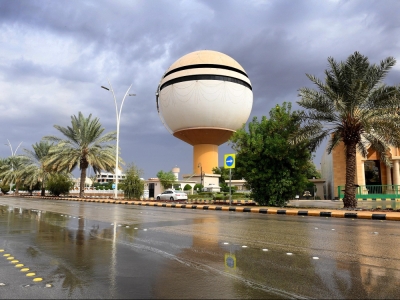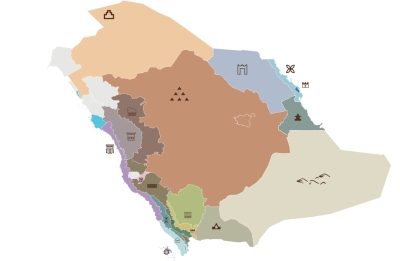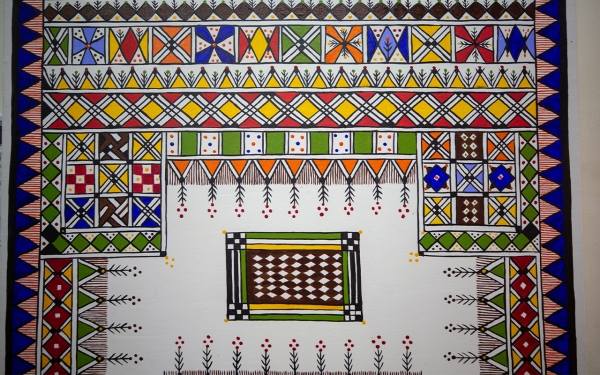
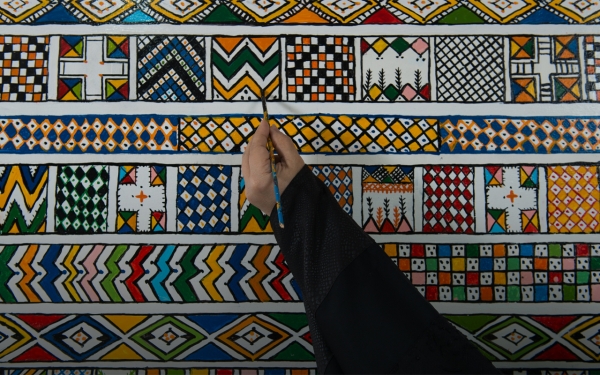
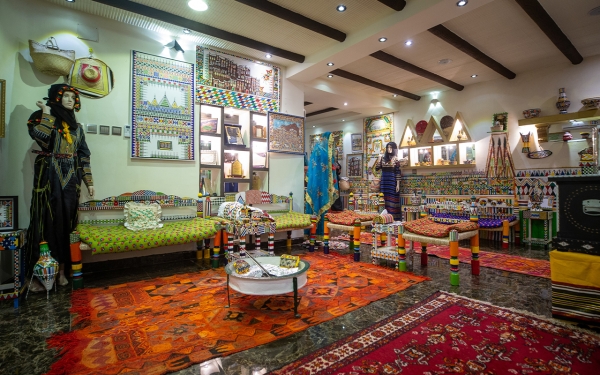
Al-Qatt al-Asiri is a traditional art form of engraving and ornamentation in the Aseer Province, southwestern Saudi Arabia. It relies on depicting geometric and floral patterns using primary colors directly on the interior walls of homes, reception areas, or any permanent and fixed surfaces.
In 2017, the art of al-Qatt al-Asiri was inscribed on the Representative List of the Intangible Cultural Heritage of Humanity by the United Nations Educational, Scientific and Cultural Organization (UNESCO).
The Patterns of al-Qatt al-Asiri Engravings
Al-Qatt al-Asiri designs are sometimes engraved on large panels and installed in designated areas, but the traditional historical method involves direct painting on the walls.
For generations, women in Aseer Province have mastered this art, and al-Qatt al-Asiri painter is referred to as "al-Qattatah." In harmony with the designated surfaces, al-Qatt art constitutes an architectural heritage that symbolizes the women of the region. Fatimah bint Ali Abu Qhhas is considered one of the leading Saudi women practicing this art.
The name and symbolism of al-Qatt al-Asiri
The name "al-Qatt al-Asiri " was a practical extension of its first drawing. In Arabic, "al-Qatt" means cutting horizontally, and practically, it represents the line drawn in the middle of the wall, dividing it into two halves.
In the past, al-Qatt al-Asiri art was used to showcase the wealth of a family. The complexity of the designs, mastery in drawing the panels, and variety of colors used indicated the level of skill and affluence of the household. Simple patterns consisting of basic straight lines in red, yellow, black, and blue colors were often found in less affluent homes.
The patterns of al-Qatt al-Asiri
In al-Qatt al-Asiri art, there are various forms of engravings, such as al-Banat (young females), al-Ariash (plants), al-Mahareeb (prayer niche), al-Rukun (triangles), al-Balsanah (rhombus shapes), al-Amshat (parallel lines), al-Ta'dheeq (triangle ends with three points resembling corn stalks), al-Sankroli (parallel prayer niches), al-Mathalith Wal Makhamis (three or five parallel lines), al-Kaf (parallel line in the bottom of the walls), and al-Shabakah (geometric squares of a uniform color).
Due to the effort, cost, and time required for creating al-Qatt al-Asiri mural, the women's efforts are mainly focused on painting it in the hospitality hall, as it is considered the most significant part of the house in Saudi culture.
The significance of al-Qatt al-Asiri in the modern era
The practice of al-Qatt al-Asiri began as a way to beautify homes, and the community practices used in painting vary between different villages in terms of techniques. Today, it stands as one of the Saudi arts that garners national cultural and tourism support. It has given Aseer Province a unique tourism identity, reflected in road signs, logos, souvenirs, and clothing.
The old village houses, considered the cradle of al-Qatt al-Asiri art, have been transformed into open art exhibitions for visitors, such as the village of al-Muftaha, Rujal Village, and Shahran villages.
Related quizzes
Related articles

